This must be downtown L.A.
- Share via
If Los Angeles is a city in flux — a place with an ever-shifting center that’s home to many a transplant and is sometimes too eager to favor the new — then perhaps no neighborhood better embodies our town than downtown. Once the beating heart of the region, downtown has survived multiple eras of ups and downs, and remains a place in constant transformation.
To live in downtown — I have been a resident of the area for nearly 15 years — is not only to confront the fantasy of Los Angeles but also to come face to face with the city at its most dystopian. It’s a neighborhood of clashes, home to the grandeur of Walt Disney Concert Hall, the romance of rooftop eateries, the idealized history of Olvera Street and, of course, the harsh realities of class inequity and unrealized dreams, as downtown and Skid Row remain the epicenter of our homeless crisis.
And yet, downtown is history.
Get to know Los Angeles through the places that bring it to life. From restaurants to shops to outdoor spaces, here’s what to discover now.
The Angels Flight Railway today is a charmer, a short theme-park like journey connecting the heights of Bunker Hill with the Historic Core and Grand Central Market. But the Bunker Hill of today, with its skyscrapers and art museums, is a long way removed from its turn-of-the-century Victorian homes — or the so-called blight that the area was in the 1940s and ’50s when the rich jettisoned downtown. Displacement and leveling occurred.
Downtown is contradictions. Until 1957, downtown buildings were capped to a height of 150 feet. A building boom followed, and downtown won its reputation as a place occupied by 9-to-5 office workers by day, deserted by night. Today, unfinished skyscrapers have become canvases for graffiti artists, and a post-pandemic work-from-home lifestyle has pinned the hopes for downtown’s future on its potential as a residential area.
Downtown is the center of our city — where settlers and indigenous people before them found freshwater — but emblematic of a region where its people refused to agree upon a center for any length of time. Or weren’t always given a choice. Our magnificent Union Station, today a burgeoning public transit hub, was built on ground that was the original Chinatown. To fully embrace downtown is to be forced to reconcile our city’s sometimes messy past.
And yet downtown is home. The ornate movie palaces of Broadway still stand, though are used more often as concert venues today. One is an Apple Store, the arrival of which in 2021 was itself seen as something of a pivotal moment, heralded, much as was the return of Ralphs to the area in 2007, as a sign that downtown was once again a livable destination.
But it always was. To try to capture downtown in a neighborhood guide is nearly impossible: The Historic Core is as different from Bunker Hill as South Park is from the Fashion District. We’ve splintered off the Arts District, which is equally unwieldy, and have defined downtown as a place stretching from around Union Station to the mecca of activity near Crypto.com Arena. Look for the neighborhoods-within-a-neighborhood that are Little Toyko and Chinatown to receive a similar treatment soon.
What you’ll find here is a look at a heavily walkable slice of Los Angeles, a place where gourmet food resides in the 100-plus-year-old food hall of Grand Central Market, where cocktail bars such as the Wolves attempt to whisk us to a yesteryear that never existed, and a bookstore has become a tourist destination that serves as a living art gallery. There’s more to the region than is captured here, of course — the details of our city’s founding, for instance, or the battle over the creation of a French dip sandwich. But what is here is comfortable and communal, be it the gloriousness of a flour tortilla or the coziness of a neighborhood bar.
Downtown, finally, is a mystery. Venture into an alley, for example, to find the Smell, still the best all-ages location for underground and experimental music. Turn into a somewhat abandoned courtyard and stumble into a nearly forgotten slice of Old World kitsch. Nestled near the heart of Skid Row lies Mignon, one of the quietest, most intimate wine bars in the city. And hiding in the Central Library just happens to be one of the city’s niftiest little gift shops.
That it can hold all this and more, that it can be the birthplace of our city yet also one of our most malleable neighborhoods, is key to downtown’s allure. It can be grimy and unvarnished, sure, but it’s also never stopped dreaming. Is it the city core that it was envisioned as more than a couple of centuries ago? For many, it was never anything but.
What's included in this guide
Anyone who’s lived in a major metropolis can tell you that neighborhoods are a tricky thing. They’re eternally malleable and evoke sociological questions around how we place our homes, our neighbors and our communities within a wider tapestry. In the name of neighborly generosity, we included gems that may linger outside of technical parameters. Instead of leaning into stark definitions, we hope to celebrate all of the places that make us love where we live.

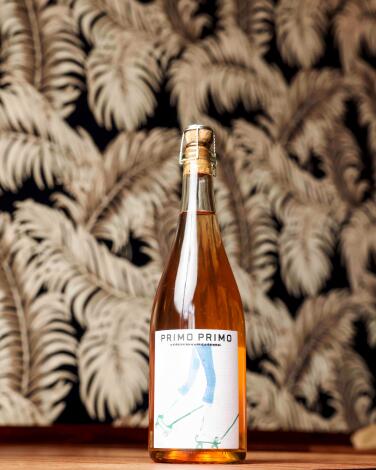
Get to know the locals at Kippered
As Kippered has settled in, co-owners Reed Herrick and Lydia Clarke have tinkered with the menu. Some nights, for instance, may feature tasteful sloppy Joes or decadent garlic cheese bread (follow along on Instagram for specials). The feel is casual but ever so slightly sophisticated, as burgundy-accented furnishings create a warm yet urban vibe. Cozy up to the bar, and don’t be surprised if unexpected conversations erupt, as Kippered’s ambition is to be a big city’s small-town bar.
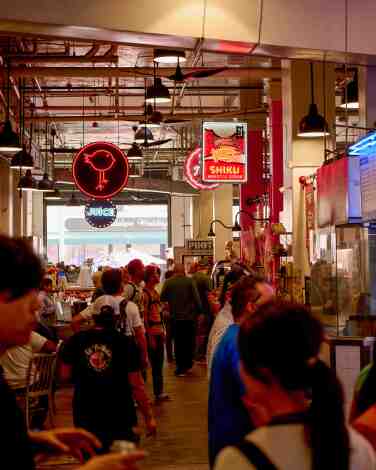
Food is communal at Grand Central Market
But the reason Grand Central Market is a must-visit for any local or tourist isn’t just because it has stood for more than 100 years and features a smattering of our town’s finest upscale offerings. No, Grand Central Market, with its food stalls on top of food stalls, butting up against coffee stands, neon light installations and a beer stand, still feels like L.A. at its most democratized, where crowds jostle for inventive ice cream, loaded egg sandwiches and lofty pastrami sandwiches. Its abundant diversity and overflowing crowds result in something uniquely communal.
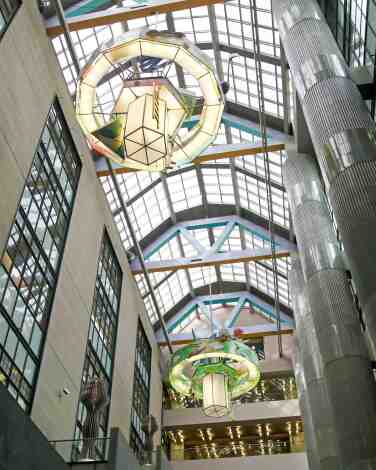
Visit one of downtown's best gift shops at the Central Library
The Central Library can be awe-inspiring in its breadth, especially if one stands in its atrium, looking down into a vast collection of knowledge and up toward towering, sun-drenched sculptures. We declared it one of our favorite libraries to work, noting its historic details such as a staircase flanked by a pair of sphinxes, its ornate bronze Zodiac Chandelier and its murals that dot the original 1926 building. A tour is recommended.
But if one’s schedule doesn’t align, it’s worth popping into the Central Library for its rotating art exhibits, extensive list of events or even just to visit its gift shop, one of downtown L.A.’s best. There are books, yes, exploring the city’s culture and history, but also art, local crafts and even fancy gummy bears. Come for the stationery, go home with some California-branded socks.
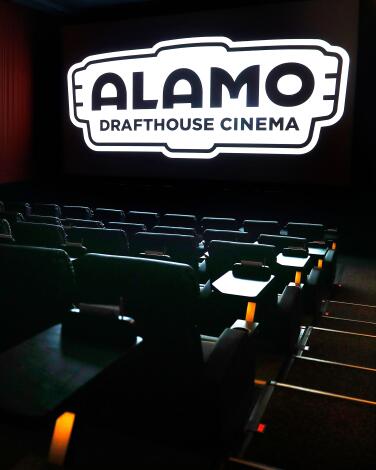
Attend a movie party at Alamo Drafthouse Cinema
Alamo Drafthouse was among the pioneers of in-seat service, with an extensive menu of food and beverages available to be ordered and served in the theater. The chain also prides itself on a strict policy of no texting or talking during a movie. That’s important, because its 12 downtown theaters, ranging from 40 to 63 seats, are all relatively intimate. And while much has been written in recent years about America’s moviegoing habits and the struggle to compete with streaming, screenings at the Alamo tend to be relatively full. Book your seat early via the website or app.
What audiences will find at the Alamo is a curated mix of new films and classics, brunch screenings and, for those who just need to shout or speak in a theater, “movie parties,” where fans can cheer, boo or quote favorite lines to films such as “The Twilight Saga: New Moon.” Get there early and hang out in the theater’s store/bar Video Vortex, where one can grab a pint, peruse board games and movie rentals or sometimes take part in a speed-dating event.
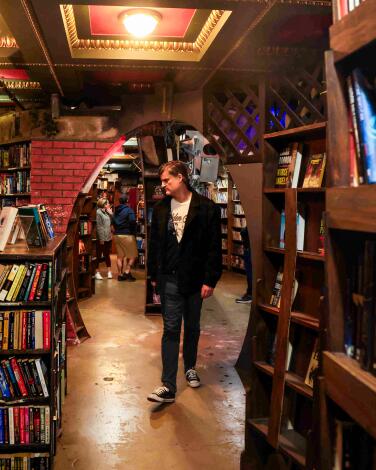
Get lost in the labyrinth of the Last Bookstore
The Last Bookstore has managed to turn the bookshop into a tourist attraction, where the act of perusing reading material feels unexpected, somewhat mystical, as shelves will suddenly open up as “portals” into another branch of the store. But beyond its hidden rooms and cozy-looking couches and chairs, this despite tape holding parts of them together, the Last Bookstore is in fact a formidable store, housing new and used books from every genre imaginable. Spy a creepy-looking picture of a young woman, and it’s likely to lead to an extensive horror section. One hidden nook will lead to graphic novels.
You’ll want to budget a fair amount of time to explore all the Last Bookstore has to offer, which includes a small second-floor coffee shop, a vinyl collection and a smattering of art galleries. The tiny Fold Gallery, for instance, is packed with unique gifts, ranging from local artworks to vintage maps, action figures and “Peanuts”-branded glassware from a fast food eatery. There are odd but irresistible gifts aplenty, such as a flask designed to look like a vintage Game Boy.
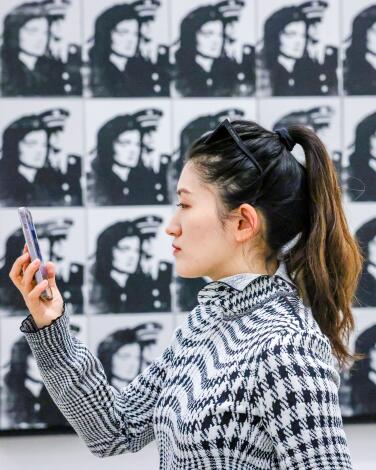
Enter a box of contemporary art at the Broad
Inside, guests are still getting lost in Yayoi Kusama’s Infinity Mirror Rooms, which mesmerize and dazzle in the array of lights and colors (the main exhibit, “Infinity Mirrored Room — The Souls of Millions of Light Years Away,” still requires a reservation, which can be made when booking one’s admission online). But elsewhere, the Broad’s permanent collection of contemporary art is filled with Pop masterpieces, including extensive collections of work by Roy Lichtenstein, Andy Warhol, Ed Ruscha and Jean-Michel Basquiat, among many others. And keep an eye on the museum’s talks and music events.
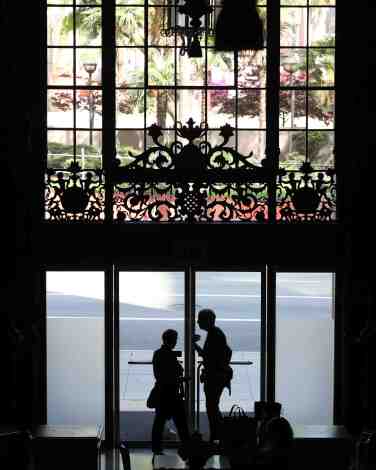
Have a cocktail surrounded by angels at the Biltmore
It’s still a thing of beauty today, though its days of hosting the Academy Awards and the Beatles are behind it. Lovingly restored in the 1980s, the Biltmore now is a place of timeless gracefulness, even as it remains rooted in a period in which downtown seemed as if it would become the center of the world.
Come, for instance, on a Saturday afternoon for a Biltmore staple, the hotel’s refined take on afternoon tea (expect to book a few weeks in advance). Looking for something more casual? Pop in to the Gallery Bar and Cognac Room for a cocktail, small plates and complimentary popcorn. It’s a place to catch a Dodgers game, or just marvel at the carved angels that surround the granite bar. Or better yet, make it ground zero for your downtown staycation.
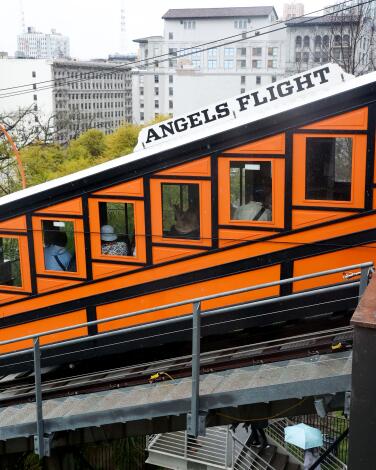
Ride the world's shortest railway for $1
The tiny funicular railway — it’s a charmer — is a must-do at least once. Tack it on, for instance, to a visit to Grand Central Market. One-way rides are $1 apiece and, at the time of publication, Metro Tap Card users get a discount. Fun fact: Its two cars, built in a Beaux-Arts architectural style, are named Sinai and Olivet.

Interact with music history at the Grammy Museum
On the latter, guests can currently touch their way through hip-hop history. It’s a good way to go down musical rabbit holes. One of the Grammy Museum’s showcase exhibitions, Mono to Immersive, also is interactive, designed to educate guests on the recording process, with an emphasis on technological advancements.
But arguably the main reason to keep the Grammy Museum on your radar is its events, most of which are held in the 200-seat Clive Davis Theatre. Artists who have appeared include Olivia Rodrigo, Janelle Monáe, Caroline Polachek and Mark Ronson. Expect intimate performances and stories behind an artist’s latest work.
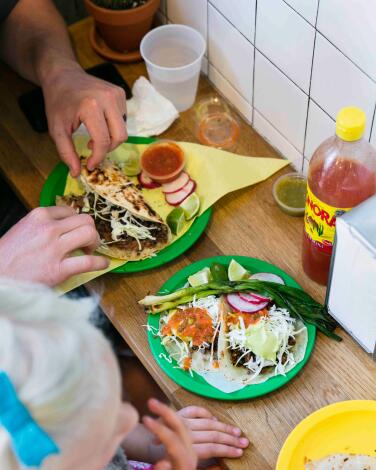
Sample Sonoratown's glorious handmade flour tortillas
And those flour tortillas are a star, thin but rich in durability. Times Food Critic Bill Addison has rated Sonoratown as one of the 101 best restaurants in the region, writing lovingly of those flour tortillas. “Like the best pie crusts they manage to be at once flaky and buttery,” Addison wrote. “Nearly translucent and handsomely pocked from the griddle, it is the flour tortilla against which to judge all others in Los Angeles.”
They are marvelous as a taco, quesadilla, chivichanga or Sonoratown’s trademark Burrito 2.0, a muscular vessel for a choice of meat, swaths of guacamole and bitingly spicy chiltepin salsa. Overdo it on the latter, and be prepared to quickly down one of the aguas frescas. Tip: Addison states, “The meat of choice is costilla — a mix of boneless short rib and chuck robed in mesquite smoke. Go for the option to add poblano.”
Another tip: Order to go, and bring home one of Sonoratown’s taco kits for the family — or a long weekend.
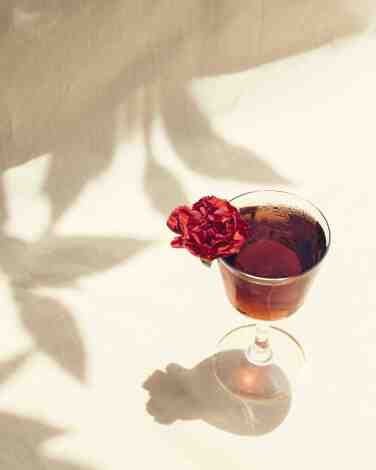
Dine in a former rectory at Redbird
It’s also stunning inside, built in the former rectory building of St. Vibiana, now an event space also operated by the Redbird team of chef Neal Fraser and Amy Knoll Fraser. A circular bar near its entrance takes guests on a journey through a lounge and a lively covered patio space; it’s also a prime destination for happy hour, where one can nibble on those aforementioned shishito peppers as well as crispy duck wings and grilled prawns. Redbird is an old-fashioned place that feels contemporary, a restaurant to splurge on a steak but also sample a strawberry-fronted cocktail.
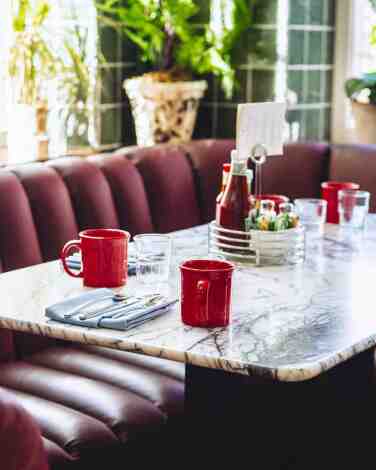
Marvel at the Midwest-influenced comfort food of Moonlark's Dinette
Familiar favorites, handled with respect and reverence, dot the menu. Breakfast is highlighted by a quesadilla with chorizo, and the space is geared for all-day dining, as omelets nest comfortably alongside the likes of a Monte Cristo with invitingly sweet bread and, of course, a thick-cut burger.
Moonlark’s is one of a few spaces leading a diner renaissance in downtown (also not to miss are Rita’s Deluxe and Denae’s Diner). The L-shaped restaurant on the ground floor of the Hoxton hotel is filled with comfortable booths and an abundance of counter seating; after 4 p.m. it offers a more dinner-focused menu, with spareribs and griddled shrimp. For a more bar-like experience, the Moonlark’s menu is available at the small lobby-adjacent cocktail lounge.
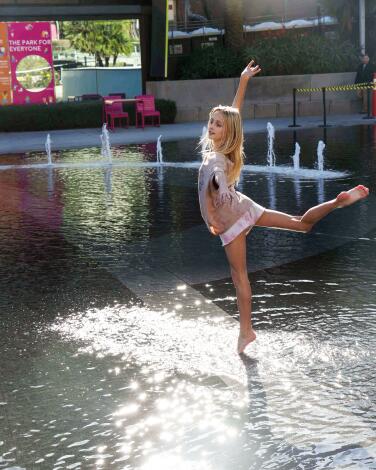
Do some yoga at Gloria Molina Grand Park
Head west toward the Music Center, and you’ll pass a flag garden accentuated with cherry blossom trees, as well as smaller gardens with international plants that represent the diversity of Los Angeles. Continue to make your way toward the Music Center, and Grand Park opens up with a large fountain and splash pad for little ones. There’s even an in-park Starbucks, and usually a midweek food truck or two. Grand Park focuses on events for the local community, or those who want to make a day of it in downtown. Be on the lookout for yoga classes and weekend music sessions.
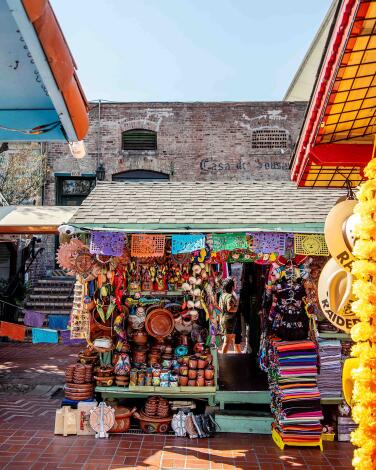
Dive into L.A. history at Olvera Street
Sterling’s tourist-centric vision succeeded, however, in saving many a historic building in the area and creating an idealized view of what downtown life could have looked like. Today, Olvera Street remains a joy to visit, as the area is dotted with museums — some small, such as the Los Angeles County Fire Museum, and others grand, such as the Latinx culture hub that is LA Plaza de Cultura y Artes. Also a must-visit is Ávila Adobe, a popular museum with tours of the space as it would have looked in the 1840s.
Then, of course, there’s the marketplace and shops, which sell souvenirs, clothing, blankets, toys or leather goods. Spend some time perusing the cramped shops, as a candle store may just have that ranchero snowman ornament you can’t live without. Restaurants and stands serve largely traditional Mexican fare, but Cielito Lindo is a must for taquitos (also a quick and affordable lunch for when you’re on jury duty nearby).

Explore the transitways — or have a pint — at Union Station
It’s a welcome development. When Union Station launched in 1939, it was the last classic rail terminal to open in the United States, doing so at a moment when voters were rejecting investment in local rail lines in favor of the city’s reliance on freeways (the Arroyo Parkway was under construction at the time). To step into Union Station on any given modern weekday, however, is to find a busy, bustling transitway, and its gorgeous bell towers and Moorish tiles still stand.
Today, there is a space for art events — a recent exhibit focused on the original Chinatown, which the creation of Union Station displaced — a charming not-quite dive bar, Traxx, and its accompanying lunchtime restaurant ( Traxx Restaurant is not open on weekends, serving primarily weekday commuters and local businesspeople). Both have a surprisingly robust menu — try the prosciutto toast.
Keep an eye on Union Station’s tour schedule, and make the transit center part of an L.A. history stop after lunch at Philippe the Original or before a Dodgers game, as the Dodger Stadium Express is the best way to avoid the headache that is the stadium parking lot.
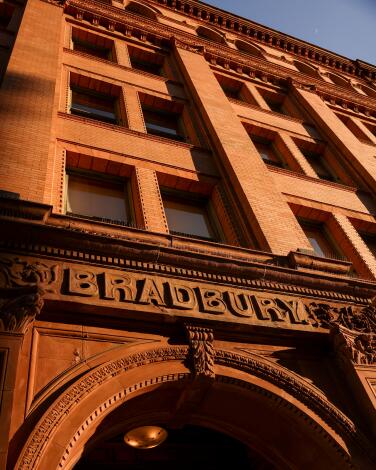
Relax with a coffee at the Bradbury Building
Visiting today, you’ll want to get a glimpse of those famous cage elevators, although unless you have business to do in the building, explorers are confined to the first floor. It’s still worth a look, as the filtered daylight from those plate-glass windows gives the bronze-colored building a photogenic golden hue. The Bradbury underwent a $7 million renovation in the early 1990s and is today working offices, but tucked into the corner is the downtown outpost of Blue Bottle Coffee. So if you can’t wander the building’s workspaces, you can still chill in the Bradbury with a latte.

Enjoy the buzz of live theater at the Ahmanson Theatre
The Taper, typically, has been the more risk-taking of the two, although the post-pandemic plight of live theater has seen its regular programming, as of early 2024, temporarily halted. The Ahmanson can still be bold, recently hosting productions such as “Matthew Bourne’s Romeo & Juliet,” “Hadestown,” “A Soldier’s Play,” “The Lehman Trilogy” and more. It’s one of our city’s biggest and most famous stages, and it brings life to a slice of downtown.
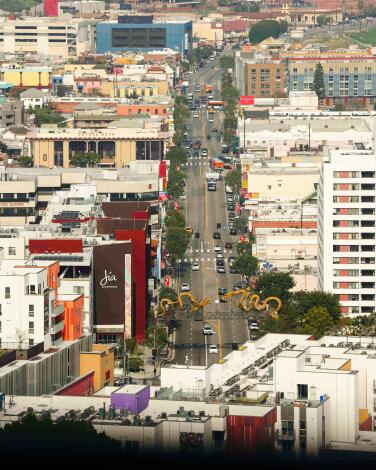
Skip the fancy rooftop brunch and see Los Angeles via City Hall
But one needn’t be splurging for brunch, a date or a business lunch to enjoy some downtown panoramas. Get a glimpse of L.A. history by visiting the Art Deco landmark that is City Hall and visit the 27th floor observation deck, where one can walk all sides of the building for a full 360-degree view of Los Angeles.
One can linger looking for historical or recognizable sites, as the deck is open as long as City Hall is open. Which brings us to the fine print: While it’s free to visit, one will need to do so on a weekday, excluding holidays, between 8 a.m. and 5 p.m. And since the center of the space is sometimes used for events or press conferences, guests are advised to call ahead: (213) 473-3231.
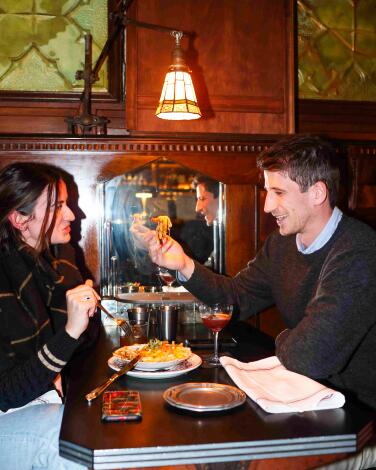
Explore the fantasy of another era at the Wolves
Is it Parisian? There’s a turn-of-the-century, stained-glass elegance to the space. Or it something more transitory, a journey through eras? Look up and spy a magnificent Belle Époque-era ceiling sourced from a Lyonnais train station. While it fits the French vibe, it also creates a sense of fantasy, as if here we leave the grimy, crowded Spring Street behind. The rest of the space is no less elegant, with Batchelder floor tiles, antique Argentine lampposts, the aforementioned stained glass and mahogany booths. It feels turn-of-the-century, but an imagined version rather than a re-creation. A spiral staircase leads to a small balcony, a playful space that provides not just an overview of the proceedings but a bit of intimacy.
And then there’s the cocktail list and a small but well-curated food menu. The drink menu also feels lifted from a theme park, albeit at its most upscale — ingredients are as varied as asparagus, Greek yogurt, black garlic, salmon skin, croissant cream and quince. For food, look for such offerings as a charcuterie plate, smoked duck wings, poutine, escargot and a croque-monsieur sandwich. It’s a menu — and a space — built for exploration.
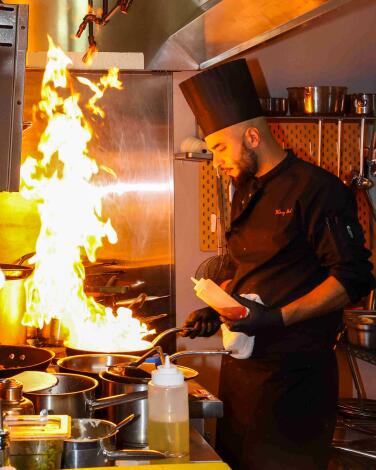
Explore the variety of French wine at Garçons de Cafe
Yet Mathieu Giraud’s Garçons de Cafe still has a homey feel — a bar overflowing with wine bottles and lamps fashioned out of vintage cognac containers. A mix of furnishings — wood-backed chairs alternate with more family-room-style seating — lend the place a down-home vibe, creating a warm escape from the bustling Spring Arcade concourse in which the bar-restaurant resides.
The star, of course, is the wine, and Garçons de Cafe maintains a French-heavy selection that has been gradually diversifying to offer a number of bottles priced around $40. Like Mignon, it’s a space built for lingering, so why not make a date night of it and visit both?
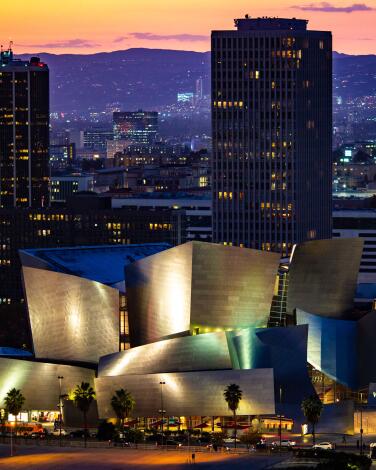
Visit a rooftop garden before the symphony at Walt Disney Concert Hall
It’s also eye-catching from the outside, its reflective silvery wave-like surfaces signaling a sense of movement. Disney Hall remains one of L.A.’s most exciting venues, any concert feeling like an event. But don’t think of Disney Hall as a place only for a special occasion.
Disney Hall has helped make orchestral music more inviting by using its entire building for pre- and postshow events. Take, for instance, its Chamber & Wine Tuesdays program, where guests can enjoy a complimentary glass 90 minutes before small ensemble performances in the intimate BP Hall. Then there are Drinks in the Garden events, where on some Friday evenings guests can head to the rooftop garden for a complimentary beverage before the show. Collectively, it all helps Disney Hall feel like more of a neighborhood hang.
Sign up for This Evening's Big Stories
Catch up on the day with the 7 biggest L.A. Times stories in your inbox every weekday evening.
You may occasionally receive promotional content from the Los Angeles Times.






